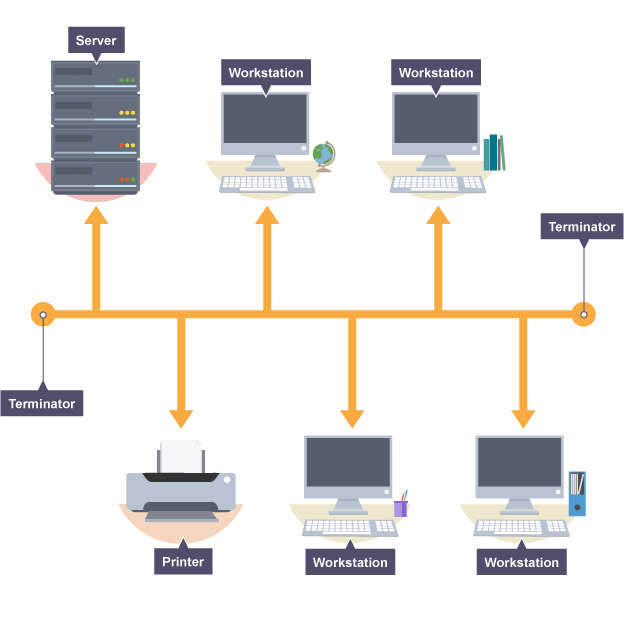
1) BUS NETWORK
DIAGRAM OF BUS NETWORK:

DEFINITION/PHYSICAL TOPOLOGY OF BUS NETWORK |
A bus network consists of a single central cable (backbone/trunk), to which all computers and other devices connect (node). |
LOGICAL TOPOLOGY OF BUS NETWORK/HOW DATA TRANSMIT |
In a bus network, it transmit data, instructions, and information
(the address of the receiving device is included) as a series of signal in both directions where all nodes receive the signal but only the intended recipient will accept the signal and the rest will ignore. |
ADVANTAGES OF BUS NETWORK:
| 1. Failure of one device usually does not affect the rest of the bus network.
2. Bus networks are inexpensive and easy to install.
3. Computers and other devices can be attached and detached at any point
on the bus without disturbing the rest of the network. |
DISADVANTAGES OF BUS NETWORK:
|
1. The network will be malfunctioned if the single central cable break down.
2. A break in the backbone (single central cable) will prevent all systems from accessing the network.
3. If more computers are connected, the performance of the network will become slower because of data collision.
4. It is difficult to identify the problem if the entire network shut down.
|